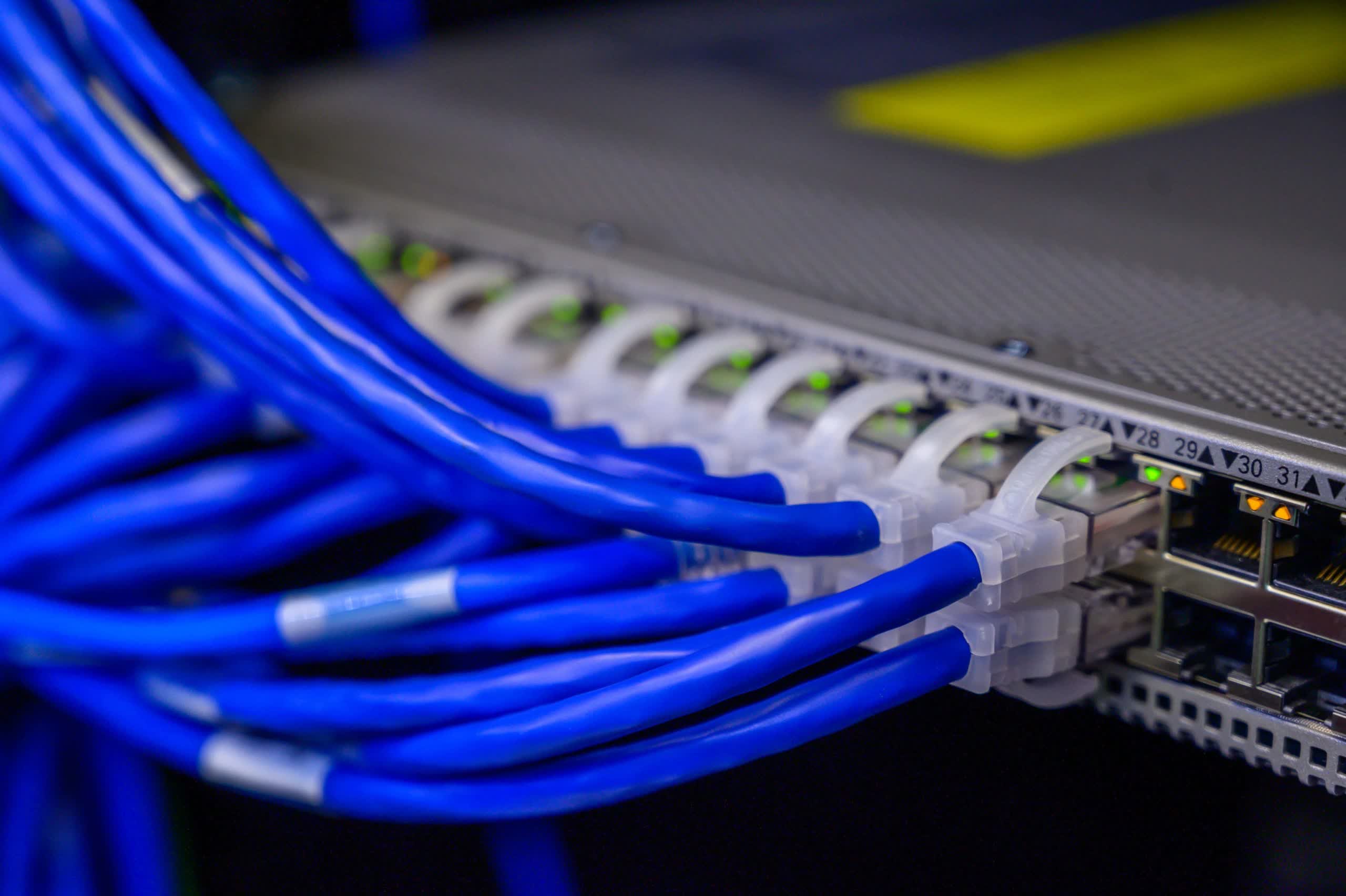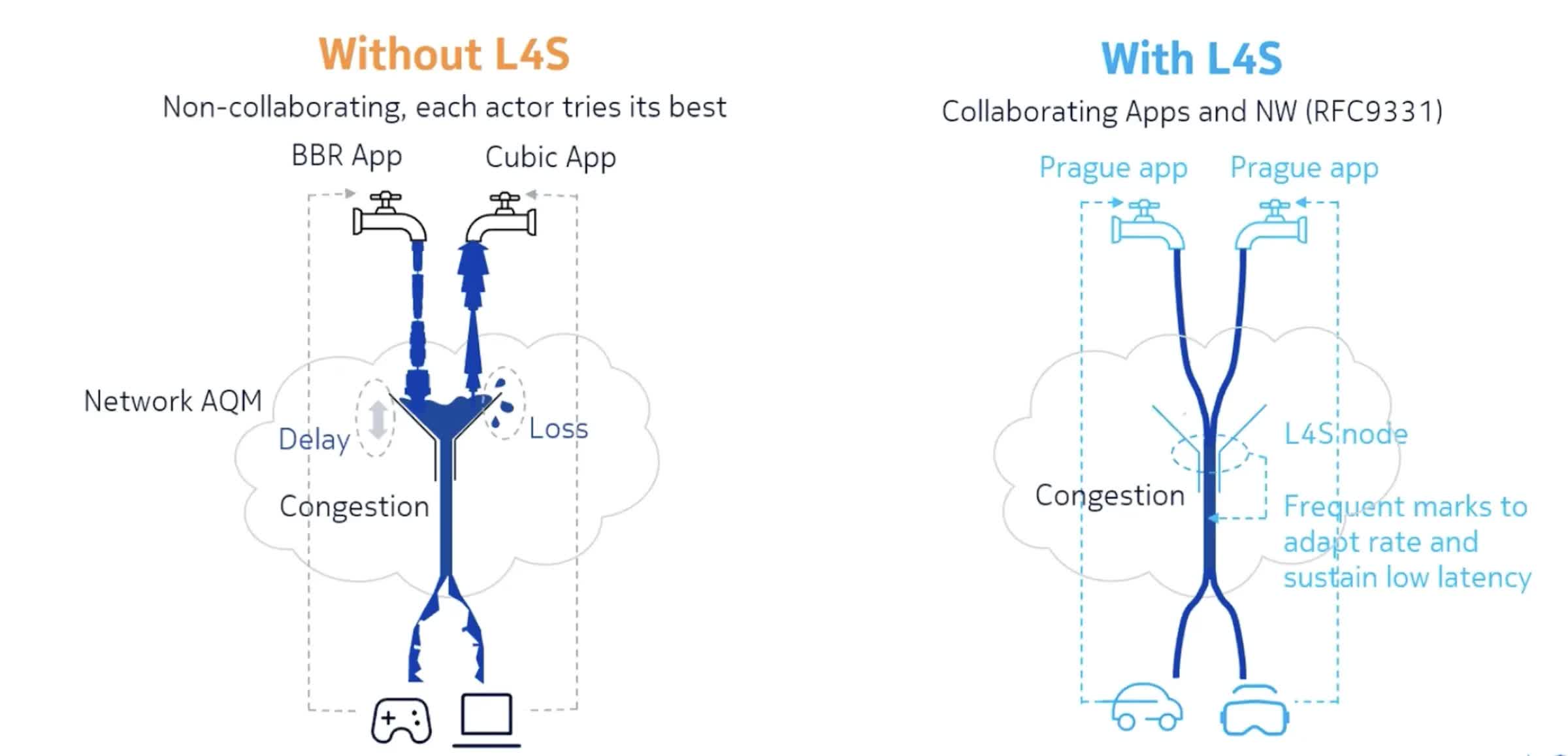Forward-looking: A new internet standard is being developed to drastically reduce network latency, boosting applications such as gaming and video streaming. While the standard can provide a measurable difference, many consumers may not even realize it's there.

For most people with decent Internet connection speeds, latency isn't usually that big of an issue... until it is. Trying to stream your favorite movie or play that critical match in Fortnite can be an exercise is futility if there's a lot of latency (or lag) disrupting the experience. A new networking standard called Low Latency, Low Loss, Scalable Throughput (L4S) that aims to make your internet speeds just a little faster and reliable.
L4S seeks to reduce how much congestion network packets spend queuing in a network. Without getting too much in the technical weeds, network latency can be caused by any number of factors including various Quality of Service (QoS) settings from different ISPs, the actual network speeds of the servers you're connecting to, and sprawling interconnection of routers and switches of the Internet itself.
Most connections using the Transmission Control Protocol (TCP) will automatically regulate the amount of traffic being sent if the downstream connection is too clogged. However, the time between sensing that bottleneck and the adjustment can take precious milliseconds – or even actual seconds.
The L4S standard seeks to fix this problem by introducing a special setting within the packet itself that specifies if that particular packet has been through congestion. That lets the next network device that's configured for L4S to immediately adjust the traffic flow instead of waiting. There is typically a buffer that holds packets that are waiting to be sent if there is congestion. If that packet with the L4S setting has to go into the buffer, it flags itself as being congested.
You might be wondering why reducing the latency by milliseconds really matters in the grand scheme. According to Greg White, an R&D technologist who helped develop L4S, "this buffering delay typically has been hundreds of milliseconds to even thousands of milliseconds in some cases. Some of the earlier fixes to buffer bloat brought that down into the tens of milliseconds, but L4S brings that down to single-digit milliseconds."
Reducing latency to single-digit milliseconds suddenly makes applications such as cloud gaming much more viable. Other applications that require low latency to be effective could reap huge benefits from this new standard. As this article at The Verge points out, L4S can't defeat physics. Accessing a server around the world will still add latency due to the sheer distance and the reality of routing electrical signals through hundreds of network devices.
And while the L4S standard could still revolutionize network speeds, it's not widely adopted yet. Big name networking and ISP companies such as Comcast, Nokia, Vodafone have all been involved in some way. Comcast conducted the first L4S trials with Apple, Nvidia, and Valve. Customers with the Xfinity 10G Gateway XB7/XB8, Arris S33, and Netgear CM1000v2 gateway can actually use L4S now, plus the Nvidia collaboration means that GeForce Now subscribers will benefit from the decreased latency.
Apple added beta support for L4S in iOS 16 and macOS Sonoma at WWDC 2023. Developers can use L4S seamlessly without modifying any existing code. Apple will begin rolling out L4S support randomly to people with iOS 17 and macOS Sonoma.
The irony is that most consumers will be blissfully unaware that their internet speeds are more reliable. However, while incorporating L4S into home and commercial networking equipment will take some time, the net positive will definitely be worth it for applications that benefit from low-latency speeds.
https://www.techspot.com/news/101164-new-internet-standard-called-l4s-aims-lower-latency.html
